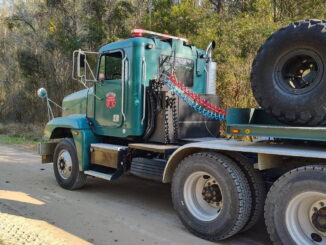
Road safety challenges differ greatly between rural and urban areas. These differences impact accident frequency, severity, and community well-being. Urban settings often face congestion, pedestrian risks, and higher crash numbers. Rural regions struggle with longer emergency response times and poor infrastructure.
Research also shows that driver behavior varies significantly between these environments. A 2023 ScienceDirect study with 346 participants revealed that rural drivers felt greater control demands but engaged in higher risk-taking. In contrast, urban drivers score higher in aggressive violations and verbal aggressive expression.
These behavioral contrasts directly affect safety outcomes. Recognizing these differences helps communities build targeted safety solutions. Each region must balance growth, mobility, and safety priorities. The need for better policies, planning, and legal awareness continues to grow. This article explores these contrasting risks in detail.
Infrastructure and Accessibility Challenges

Infrastructure is a critical factor shaping road safety outcomes in both rural and urban communities. Urban areas typically feature dense traffic signals, street lighting, and public transport systems. These systems can reduce crash severity but may also increase minor collisions.
Rural areas, in contrast, often lack well-maintained roads or marked crossings. Limited funding creates persistent hazards. Accessibility challenges add another layer of risk for rural drivers. Poor road design, limited sidewalks, and the absence of bike lanes make rural roads more dangerous.
Urban areas have better infrastructure but also higher traffic volumes. Pedestrians and cyclists in cities face elevated risks due to heavy congestion. Both regions face distinct safety gaps that require dedicated solutions.
Recent data highlights how these differences affect safety outcomes. The Insurance Institute for Highway Safety reported that 41% of motor vehicle crash deaths in 2023 happened in rural areas. Researchers linked this elevated fatality rate to inadequate infrastructure, limited safety measures, and longer travel times to trauma facilities. These results highlight the pressing need for greater investment in rural road networks and transportation services.
Emergency Response and Legal Awareness
One of the most significant contrasts between rural and urban accidents lies in emergency response time. In urban regions, medical assistance often arrives within minutes, helping to reduce fatalities. Rural communities, however, experience longer delays due to greater distances and limited medical resources. Delays often mean treatable injuries become life-threatening before help arrives.
Legal awareness also plays a key role in accident recovery. Many urban residents have easier access to legal services after crashes. Rural communities may lack these resources, leaving victims unaware of their rights. This unequal access contributes to ongoing disparities in post-accident recovery. Legal guidance ensures fair outcomes for victims and families.
Such legal awareness is especially important in cities like Atlanta, Georgia, where car accidents impact both urban and rural areas. In 2023, the state reported 1,615 motor vehicle crash deaths. Of these, 1,056 occurred in urban regions, accounting for 65%, while 559 took place in rural areas, making up 35%.
These figures highlight the prevalence of the issue across different settings. Following such cases, many individuals turn to Atlanta car accident lawyers for legal support and to ensure their rights are protected.
According to the Atlanta Personal Injury Law Firm, seeking timely legal help is crucial for individuals involved in accidents. Legal professionals provide guidance through complex insurance processes, helping victims obtain the desired justice.
Behavioral Risks and Community Culture
Driving behaviors vary widely between rural and urban communities, shaping safety outcomes in both environments. Urban drivers often deal with heavy congestion, aggressive lane changes, and frequent distractions. Smartphones, GPS systems, and multitasking contribute heavily to accident numbers. Rural drivers face different issues, often related to speed and fatigue.
Community culture influences how safety measures are perceived and followed. In urban areas, seat belt use is more consistent due to stronger enforcement. Rural communities sometimes resist safety campaigns, leading to lower compliance. This difference creates higher risks in rural areas where accidents already involve higher speeds. Cultural attitudes can directly affect life-saving behavior.
A recent study in the National Library of Medicine revealed concerning seat belt behaviors. The study found that only 14.4% of passengers in rear seats on rural roads always used seat belts, while 22.4% reported never wearing them. The research urged stronger safety education programs and community involvement. Changing cultural attitudes is essential for reducing risky driving practices in rural counties.
Technology, Data, and Future Solutions
Technology is reshaping the way both rural and urban areas approach road safety challenges. Urban centers are investing heavily in smart traffic systems, automated signals, and real-time monitoring. Rural areas remain behind due to limited budgets and smaller populations. Uneven adoption widens the gap in safety benefits.
Data-driven solutions also highlight differences in how accidents are analyzed. Urban areas often have access to advanced crash data systems that guide planning decisions. Rural areas may rely on outdated records. This restricts their ability to implement timely improvements. Stronger data-sharing partnerships between regions could help bridge these differences.
A study in the ACM Digital Library highlighted how technology plays an increasingly vital role in improving urban traffic safety management. Researchers collected detailed data on vehicle speed, travel direction, location, and environmental conditions to strengthen safety monitoring systems.
Machine learning models used this information to identify high-risk driving behaviors and accident-prone locations across traffic networks. The findings suggest these predictive systems can detect potential danger zones more effectively than traditional detection approaches.
Frequently Asked Questions:
1. Why are rural road accidents often more severe than urban accidents?
Rural road accidents are often more severe due to higher driving speeds and longer emergency response times. Limited infrastructure also contributes to greater crash severity. Poor lighting, fewer hospitals, and longer travel distances increase risks significantly for rural drivers and passengers.
2. What role does community culture play in road safety outcomes?
Community culture influences how residents follow safety rules and perceive risks. Rural communities often show resistance to enforcement campaigns, lowering compliance rates. Urban communities typically follow stricter enforcement practices. Cultural attitudes can strongly affect the success of road safety initiatives across different environments.
3. How can legal professionals support accident victims?
Legal professionals help victims handle claims, disputes, and compensation after an accident. They provide guidance on complex insurance processes and protect victims’ rights. Access to legal expertise ensures fair treatment and financial relief. Communities benefit when victims can easily access legal professionals for timely support and justice.
Rural and urban areas face different road safety risks that require unique solutions. Infrastructure, emergency response, behavior, and technology all shape these challenges. Fatalities remain higher in rural regions, while urban areas struggle with congestion and distractions. Stronger planning, legal awareness, and technology adoption are essential. Road safety improvements must consider the unique needs of every community. (Contributed Post)
























